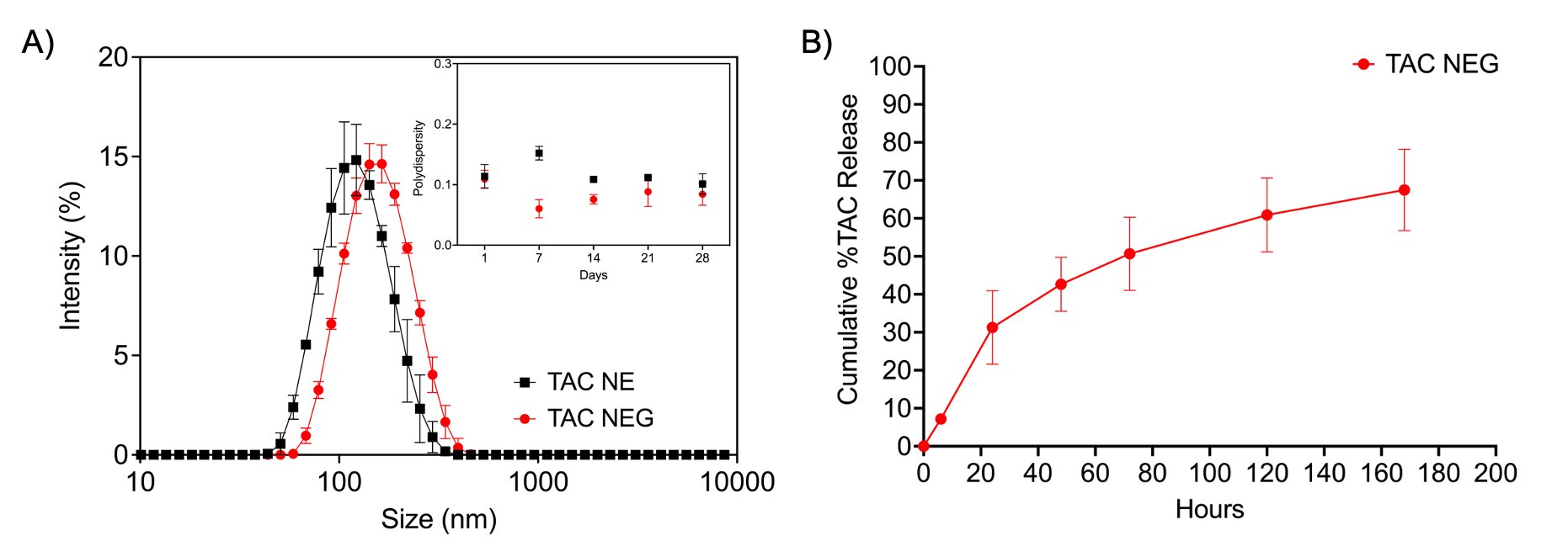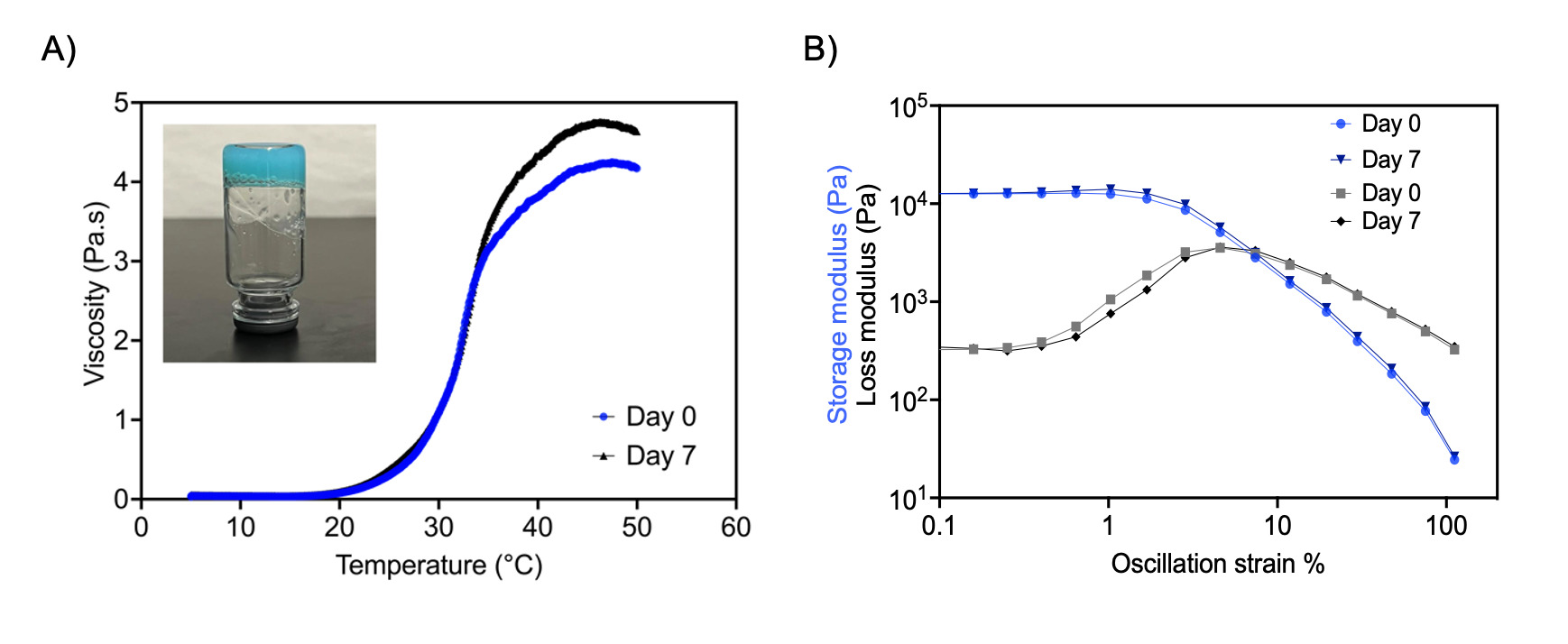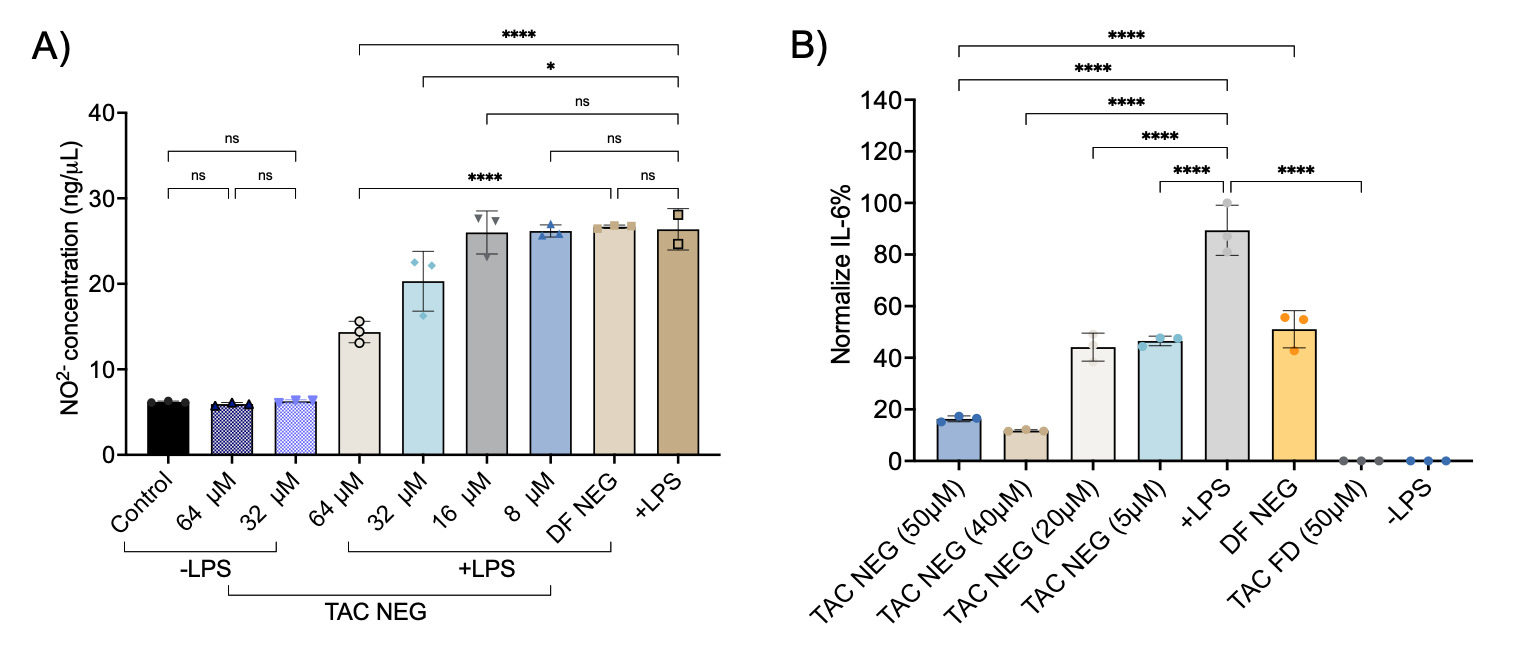Formulation and Delivery - Biomolecular
Category: Poster Abstract
(T0930-11-71) Development of a Novel Tacrolimus Loaded Thermoresponsive Nanoemulgel for Local Immunomodulation in Organ Rejection
Tuesday, October 24, 2023
9:30 AM - 10:30 AM ET

Riddhi S. Vichare, MS (she/her/hers)
Graduate Student
Duquesne University
Pittsburgh, Pennsylvania, United States
Riddhi S. Vichare, MS (she/her/hers)
Graduate Student
Duquesne University
Pittsburgh, Pennsylvania, United States- JM
Jelena M. Janjic, Ph.D. (she/her/hers)
Duquesne University
Pittsburgh, Pennsylvania, United States - lL
lu Liu, MS (he/him/his)
Duquesne University
pittsburgh, Pennsylvania, United States - AD
Ashish Dhayani, Ph.D. (he/him/his)
Duquesne University
Pittsburgh, Pennsylvania, United States - AD
Amit Chandra Das, MS
Duquesne University
Pittsburgh, Pennsylvania, United States - VG
Vijay Gorantla, Ph.D. (he/him/his)
Wake Forest University
newtork, New York, United States
Presenting Author(s)
Main Author(s)
Co-Author(s)
Purpose: One third of organ transplant recipients suffer from organ rejection despite the continual administration of broad immunosuppressants. The oral bioavailability of FDA-approved tacrolimus (TAC) (FK506, Prograf®) immunosuppressant drug ranges between 7.3% and 19.7% [1]. However, 95% of the bioavailable TAC binds to the red blood cells (RBCs), where it exerts no immunomodulatory effects. This necessitates repeated high doses of TAC, which can lead to off-target effects like nephrotoxicity [2]. One approach to obviate systemic exposure is to deliver immunosuppressive drugs locally [3]. For this purpose, we present a thermoresponsive nanoemulgel (NEG) platform with an ultra-low dose of TAC for the immunomodulation of macrophages. Macrophages are promising therapeutic targets as they are the dominant infiltrated cell type (~60%) at the site of the transplant during severe rejection episodes, and their increased levels correlate with poor prognosis post-transplantation [4]. Importantly, macrophages are skewed towards the proinflammatory phenotype (M1), which primarily causes neuroinflammation and delays nerve regeneration, a critical outcome for a successful transplant. Macrophages contribute to transplant rejection through pathways like increased pro-inflammatory cytokine release (e.g., TNF-
Methods: For the preparation of NE, TAC was dissolved in an optimized solubilizer overnight. The hydrocarbon oil phase, lipophilic near-infrared fluorescent (NIRF) dye, non-ionic surfactant solution, and the dissolved TAC were processed on a microfluidizer (Microfluidics, M110S) under controlled pressure and temperature. The developed NE was evaluated for long-term colloidal stability and imaging properties. TAC-NEG was prepared by sterilely incorporating TAC-NE in an amphiphilic triblock Pluronic copolymers solution, used as a thermo-gelator. Macrophages (RAW 264.7) were cultured and activated by LPS to test for the effect of TAC-NE and TAC-NEG on cell viability using CellTiter-Glo® ATP assay. The drug loading and in vitro release of TAC were studied using a validated HPLC method and dialysis bag respectively. The sol-gel transitions of TAC-NEG were studied through rheological measurements made on a rheometer. The decrease in the release of proinflammatory cytokines (e.g., TNF-
Results: The manufactured TAC-NE stabilized by non-ionic surfactants resulted in small-sized droplets (~120 nm) with narrow polydispersity (Figure 1A). The TAC-NE maintained exceptional colloidal stability under physical stress, temperature fluctuations, and in high serum-containing media. The incorporation of TAC-NE into the pluronic copolymers solution resulted in NEG with an average droplet diameter of 150 nm (Figure 1A). The in vitro release of TAC from NEG was much slower resulting in a sustained release profile (Figure 1B). TAC-NEG displayed thermoresponsive behavior and spontaneously formed stable gel at body temperature as shown by an increase in viscosity with temperature (Figure 2A). There were no changes observed in gel strength when measured one week apart (Figure 2A & B). As opposed to TAC solution which was toxic at higher concentration (80 μM), the TAC loaded NE and NEG did not result in macrophage toxicity. The TAC-NEG was taken up by macrophages primarily through phagocytosis. A dose-dependent decrease in TNF-
Conclusion: The feasibility of producing stable TAC-NE through microfluidizers provides an efficient way for commercial scale-up applications. At room temperature, the developed TAC-NEG was a free-flowing sol, which supports easy local administration through a syringe, however, rapidly transforms to a stable gel at body temperature. TAC-NEG provides sustained drug release with no burst, which will prevent off-target side effects like nephrotoxicity. Based on the in vitro findings, TAC-NEG was safe and rapidly phagocytosed by activated macrophages. TAC-NEG effectively decreased proinflammatory cytokines and NO2- released by LPS-activated macrophages, potentially resolving inflammation. The presented in vitro data in LPS-activated macrophages sets the stage for future in vivo experiments.
References: 1. Brooks, E., et al., Population pharmacokinetic modelling and Bayesian estimation of tacrolimus exposure: is this clinically useful for dosage prediction yet? Clinical pharmacokinetics, 2016. 55: p. 1295-1335.
2. Jusko, W.J., et al., Pharmacokinetics of tacrolimus in liver transplant patients. Clinical Pharmacology & Therapeutics, 1995. 57(3): p. 281-290.
3. Schnider, J.T., et al., Site-specific immunosuppression in vascularized composite allotransplantation: prospects and potential. Clinical and Developmental Immunology, 2013. 2013.
4. Hancock, W.W., N.M. Thomson, and R.C. Atkins, Composition of interstitial cellular infiltrate identified by monoclonal antibodies in renal biopsies of rejecting human renal allografts. Transplantation, 1983. 35(5): p. 458-462.
5. Tan, L., et al., The Dual Regulatory Roles of Macrophages in Acute Allogeneic Organ Graft Rejection. Engineering, 2022. 10: p. 21-29.
Acknowledgements: The work presented is supported CDMRP awards: W81XWH-19-1-0828 (RT180093P1) and W81XWH-20-1-0769 (PI: J.M. Janjic and V.S Gorantla)
 Figure 1. A) Overlay of averaged size distribution by intensity and dispersity index of Tacrolimus loaded NE and NEG. B) In vitro release profile of TAC from TAC-NEG using dialysis bag in PBS (pH=7.4) at 37℃ (n=3).
Figure 1. A) Overlay of averaged size distribution by intensity and dispersity index of Tacrolimus loaded NE and NEG. B) In vitro release profile of TAC from TAC-NEG using dialysis bag in PBS (pH=7.4) at 37℃ (n=3).  Figure 2. A) Effect of temperature (℃) on the viscosity (Pa.s) of TAC-NEG and a photograph of TAC- NEG exposed to 37℃ for 5 minutes. B) Relationship of storage and loss modulus with oscillation amplitude. The data shows that the gel strength does not vary with time (Day 0 and Day 7), demonstrating stable gel formation.
Figure 2. A) Effect of temperature (℃) on the viscosity (Pa.s) of TAC-NEG and a photograph of TAC- NEG exposed to 37℃ for 5 minutes. B) Relationship of storage and loss modulus with oscillation amplitude. The data shows that the gel strength does not vary with time (Day 0 and Day 7), demonstrating stable gel formation. Figure 3. A) Comparison of release of nitric oxide (NO2-) from macrophages exposed to TAC-NEG (64 μM -8 μM) and volume-matched to highest concentration drug free nanoemulgel (DF-NEG) in presence or absence of LPS. B) Comparison of Interleukin-6 (IL-6) inhibition from LPS-activated macrophages exposed to TAC-NEG (50 μM -5 μM), volume-matched to highest concentration DF-NEG, and TAC free drug (50 μM). Each bar represents mean ± SD (n=3, independent culture). ns not significant, ***p < 0.0005, ****p < 0.00005.
Figure 3. A) Comparison of release of nitric oxide (NO2-) from macrophages exposed to TAC-NEG (64 μM -8 μM) and volume-matched to highest concentration drug free nanoemulgel (DF-NEG) in presence or absence of LPS. B) Comparison of Interleukin-6 (IL-6) inhibition from LPS-activated macrophages exposed to TAC-NEG (50 μM -5 μM), volume-matched to highest concentration DF-NEG, and TAC free drug (50 μM). Each bar represents mean ± SD (n=3, independent culture). ns not significant, ***p < 0.0005, ****p < 0.00005.